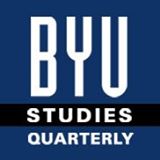BYU Studies

Keywords
Public Prayers, prayer, communication, language
Abstract
Prayer, as defined by scholars Corwin and Brown, is “a form of ritual language . . . [that] affords humans the possibility to communicate with non-human others.” As a linguistic register (that is, a variety of language defined by an area of use, such as academic research articles, text messages, sermons, or blog posts), it denotes communication with an unseen being, primarily in a religious context. However, “despite the importance of religion and ritual in anthropology, prayer, a key component of religious practices and institutions, has received very little empirical attention.” This is partially because the complexity of religion as a sociological concept makes it particularly difficult to study in an empirical context, even when it is broken down into individual acts and practices, such as prayer. Across cultures and religions, prayers appear in a wide variety of forms, each with a different intention and often with a different expected audience and response. Thus, it is impossible to establish universal generalizations about prayer, though key conclusions can be drawn from investigating specific contexts.
Recommended Citation
Newton, Lindsey and Hashimoto, Brett
(2023)
"A Register Analysis of Public Prayers,"
BYU Studies: Vol. 62:
Iss.
2, Article 5.
Available at:
https://scholarsarchive.byu.edu/byusq/vol62/iss2/5
